I eventually came up with a solution, it doesn't work 100% yet but most of the time it does. There is an odd bug that causes one or two line to be misplaced, I'm still working on that. the code pretty much takes each line and when it gets to a vertex it goes right, thus landing up at the starting point or at a border point. Once the sort of polygons have been made, the border function places all the missing borders in the polygons. My plan after this is to get rid of the duplicate polygons as it is redundant having them and slows the method down.
private void constructPolygons() {
listRoots = new ArrayList<>();
int poly = 0;
for (GraphEdge edge : edges) {
List<GraphEdge> prevEdges = new ArrayList<>();
prevEdges.add(edge);
int count = 0;
Point forward = edge.getEnd();
Point reverse = edge.getStart();
GraphEdge currentForward = edge;
GraphEdge currentReverse = edge;
List<GraphEdge> tempArray = new ArrayList<>();
tempArray.add(edge);
System.out.println("#############################################");
System.out.printf("### Line %d is the start #####################\n", poly);
System.out.println("#############################################");
for (int ii = 0; ii < edges.size(); ii++) {
GraphEdge compEdge = edges.get(ii);
System.out.println("line: " + ii);
System.out.println("forward: " + forward.xCord + " " + forward.yCord);
System.out.println("reverse: " + reverse.xCord + " " + reverse.yCord);
System.out.println("compEdge: " + compEdge.getStart().xCord + " " + compEdge.getStart().yCord + " " + compEdge.getEnd().xCord + " " + compEdge.getEnd().yCord);
System.out.println("tempArray size: " + tempArray.size());
// Check to see whether polygon is closed. If true, break and continue with other points.
if( ((Math.abs(forward.xCord - reverse.xCord) <= tolerance) && (Math.abs(forward.yCord - forward.yCord) <= tolerance)) ) {
System.out.println("POLYGON MUST CLOSE");
break;
}
// Check to see whether point is on one of the borders
if( (((Math.abs(forward.xCord - mapMaxX) <= tolerance) || (Math.abs(forward.yCord - mapMaxY) <= tolerance)) ||
((Math.abs(forward.xCord - mapMinX) <= tolerance) || (Math.abs(forward.yCord - mapMinY) <= tolerance))) && (tempArray.size() > 1) ) {
System.out.println("POLYGON MUST CLOSE");
break;
}
// Check to see if edge has already been used
if (!tempArray.contains(compEdge)) {
double compStartX = compEdge.getStart().xCord;
double compStartY = compEdge.getStart().yCord;
double compEndX = compEdge.getEnd().xCord;
double compEndY = compEdge.getEnd().yCord;
if( ((Math.abs(forward.xCord - mapMinX) <= tolerance || Math.abs(forward.xCord - mapMaxX) <= tolerance) || (Math.abs(forward.yCord - mapMinY) <= tolerance || Math.abs(forward.yCord - mapMaxY) <= tolerance)) && (tempArray.size() <= 1)){
System.out.println(tempArray.size() < 1);
System.out.println("Swap values around");
Point temp = forward;
forward = reverse;
reverse = temp;
}
// If end of currentForward == start of compEdge
// Start -- End --> Start -- End
if ((Math.abs(forward.xCord - compStartX) <= tolerance) && (Math.abs(forward.yCord - compStartY) <= tolerance)) {
System.out.println("end -> start");
double sign1 = isPointLeft( currentForward.x1, currentForward.y1, forward.xCord, forward.yCord, compEndX, compEndY );
double sign2 = isPointLeft( currentForward.x2, currentForward.y2, forward.xCord, forward.yCord, compEndX, compEndY );
System.out.println("sign: " + sign1);
System.out.println("sign: " + sign2);
// End point must be on the right side of the line
if (sign1 > 0 || sign2 > 0) {
ii = -1;
forward = compEdge.getEnd();
currentForward = compEdge;
tempArray.add(compEdge);
System.out.println("added: " + compEdge.getStart().xCord + " " + compEdge.getStart().yCord + " " + compEdge.getEnd().xCord + " " + compEdge.getEnd().yCord);
}
}
// If end of currentForward == end of compEdge
// Start -- End --> End -- Start
else if ((Math.abs(forward.xCord - compEndX) <= tolerance) && (Math.abs(forward.yCord - compEndY) <= tolerance)) {
System.out.println("end -> end");
double sign1 = isPointLeft( currentForward.x1, currentForward.y1, forward.xCord, forward.yCord, compStartX, compStartY );
double sign2 = isPointLeft( currentForward.x2, currentForward.y2, forward.xCord, forward.yCord, compStartX, compStartY );
System.out.println("sign: " + sign1);
System.out.println("sign: " + sign2);
// Start point must be on the right side of the line
if (sign1 > 0 || sign2 > 0) {
ii = -1;
forward = compEdge.getStart();
currentForward = compEdge;
tempArray.add(compEdge);
System.out.println("added: " + compEdge.getStart().xCord + " " + compEdge.getStart().yCord + " " + compEdge.getEnd().xCord + " " + compEdge.getEnd().yCord);
}
}
} else {
System.out.println("already in list");
}
count++;
prevEdges.add(compEdge);
System.out.println("------------------------------------------");
}
if (tempArray.size() > 1) {
listRoots.add(tempArray);
poly++;
}
}
for (List<GraphEdge> list : listRoots) {
boolean point1 = false, point2 = false;
Point bp1 = new Point(), bp2 = new Point();
// System.out.println("---------------------------------");
for (GraphEdge ge : list) {
// System.out.println("Points: " + ge.x1 + "," + ge.y1 + "," + ge.x2 + "," + ge.y2);
if (ge.x1 == mapMinX || ge.x1 == mapMaxX || ge.y1 == mapMinY || ge.y1 == mapMaxY) {
if (point1) {
point2 = true;
bp2.setPoint(ge.x1, ge.y1);
} else {
point1 = true;
bp1.setPoint(ge.x1, ge.y1);
}
} else if (ge.x2 == mapMinX || ge.x2 == mapMaxX || ge.y2 == mapMinY || ge.y2 == mapMaxY) {
if (point1) {
point2 = true;
bp2.setPoint(ge.x2, ge.y2);
} else {
point1 = true;
bp1.setPoint(ge.x2, ge.y2);
}
}
}
if (point1 && point2) {
// System.out.println("Add border");
System.out.println(bp1.xCord + "," + bp1.yCord + "," + bp2.xCord + "," + bp2.yCord);
insertBorderLine(bp1, bp2, list);
}
}
}

